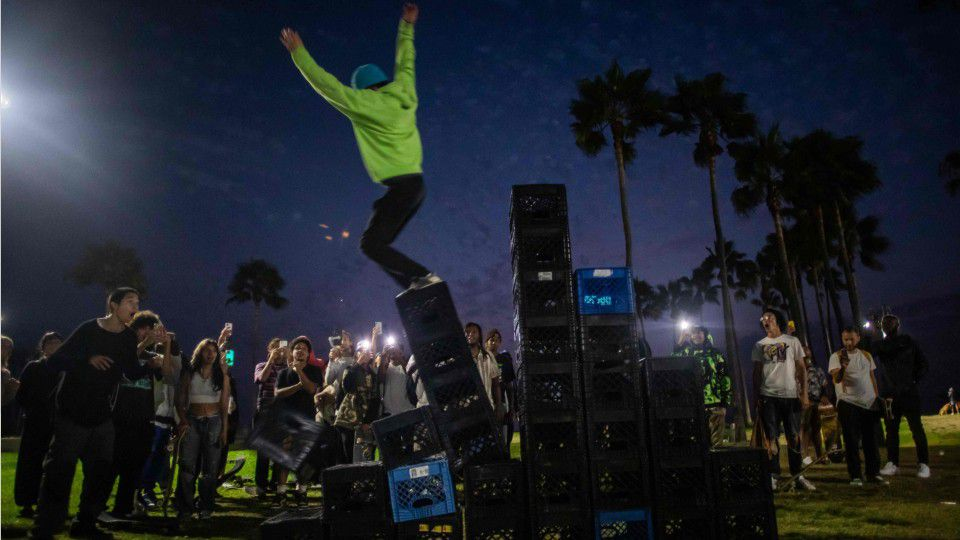A Simple Day That Turned Into a Scare
What began as a normal day quickly spiraled into a terrifying ordeal for one teenage girl and her family. According to reports, the girl—whose identity has been withheld for privacy reasons—decided to take part in a new social media challenge that had been circulating widely on platforms like TikTok, Instagram, and YouTube.
The challenge seemed harmless at first glance: upbeat music, smiling participants, and millions of views. Like countless other young users, she was curious. It looked easy. It looked fun. It looked safe.
But within minutes of trying the stunt at home, things went horribly wrong. The teenager began experiencing shortness of breath, dizziness, and chest pain. Her family rushed to help, calling emergency services as her condition worsened. Paramedics arrived quickly and transported her to the nearest hospital, where doctors administered urgent treatment.
Fortunately, she survived. Medical experts later confirmed that her symptoms were directly linked to the challenge she attempted—a stunt that involved physical strain and breathing restriction. Had help arrived just minutes later, doctors said, the outcome could have been far more tragic.

A Story That Reflects a Growing Global Problem
This incident isn’t an isolated one—it’s part of a larger, troubling pattern. Across the world, hospitals are reporting a steady increase in injuries, poisoning, and even deaths related to viral social media challenges.
From choking “games” to dangerous consumption trends and risky stunts performed for likes, the internet has become both a playground and a battleground for attention. Young users, eager to fit in or go viral, are often unaware of the real-life dangers behind seemingly harmless videos.
Dr. Marina K., a pediatric emergency specialist, explained in a recent press conference:
“Every week, hospitals see new cases of young people injured by viral challenges. Most of these videos don’t carry safety warnings, and what appears easy on screen can be extremely dangerous in real life.”
Her words echo a growing call for awareness among parents, teachers, and social media platforms alike.
Why Teens Are Especially Vulnerable
Experts point to several reasons why adolescents are particularly drawn to risky online behavior.
-
Peer Influence and FOMO: The fear of missing out (FOMO) drives many young people to participate in whatever is trending.
-
Brain Development: Neurological studies show that the teenage brain is wired for reward-seeking and novelty, often prioritizing immediate gratification over long-term safety.
-
Social Media Pressure: Likes, shares, and comments can act like digital currency, fueling a desire for online validation.
“Teens crave connection and identity,” said child psychologist Dr. Lena Wu. “When a challenge goes viral, it feels like a community event. But they often don’t recognize the hidden risks until it’s too late.”
Parents and Educators Caught Off Guard
Many parents admit they feel powerless in the face of rapidly changing internet culture. New trends appear overnight, spreading globally before adults even become aware of them.
“I didn’t even know what the challenge was until after my daughter was hospitalized,” said one mother whose teen participated in a similar viral stunt last year. “By the time I looked it up, it already had millions of views.”
Experts recommend open, judgment-free communication between parents and children. Instead of blanket bans, families are encouraged to discuss online behaviors, teach digital literacy, and establish trust.
“Teens are more likely to listen if they feel understood,” said Dr. Wu. “We have to guide them, not just monitor them.”

The Responsibility of Platforms and Influencers
As the debate intensifies, many are calling on social media companies to take greater responsibility for content that may endanger users.
While some platforms have started labeling or removing harmful trends, critics argue that algorithms still prioritize engagement over safety. Dangerous videos can go viral within hours—long before moderators take action.
Influencers, too, play a significant role. Because of their massive reach, even seemingly minor actions or jokes can inspire thousands of young followers to imitate them.
Digital safety advocate James Nolan believes influencers must set higher standards:
“If you have an audience, you have a duty. Show creativity, not recklessness. Fun shouldn’t come at the cost of safety.”
The Need for Digital Literacy and Real-World Awareness
This incident highlights an urgent need for stronger digital education programs—both in schools and at home.
Teaching young people how to question online trends, verify information, and think critically about risk can save lives.
Organizations worldwide are now working to create “digital wellness” curricula to help teenagers navigate the complex online world. These lessons go beyond cyberbullying or screen time—they focus on understanding algorithms, emotional triggers, and responsible content creation.
In addition, experts suggest that schools host discussions where students can share their experiences with online trends and learn from each other’s perspectives. The goal is to replace shame and secrecy with empathy and awareness.

A Wake-Up Call for Everyone
The teenage girl in this story was lucky—her family acted fast, and medical help arrived in time. But not every story ends that way. Some viral challenges have already claimed young lives across the world.
Her recovery now stands as both a relief and a warning. In an age where a 15-second clip can reach millions, awareness is the most powerful form of prevention.
Parents, educators, influencers, and tech companies must work together to ensure that the internet remains a space for creativity—not catastrophe.
Final Thoughts
The story of this unnamed teenager is more than just another online scare—it’s a mirror reflecting the reality of growing up in the digital age. The internet connects us like never before, but it also amplifies danger at lightning speed.
True strength today lies not in chasing viral fame but in choosing awareness over approval.
As one doctor put it simply:
“Going viral isn’t worth your life.”
So before pressing record or joining the next big challenge, remember—your safety is not a trend.






